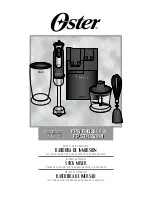
Troubleshooting — 1
Notes
Rev 3-97
* School
IQ System Troubleshooting
OVERVIEW
The purpose of this chapter is to provide detailed information about system
level troubleshooting of IQ Systems. Most problems with IQ occur at the time
of installation. Good installation techniques take care of most problems before
they happen. This chapter provides some installation tips, but it assumes little
about the quality of installation techniques. It is also important to remember that
how well a system sounds or operates depends heavily on good system design
and installation. The best troubleshooting skills may do very little for a poorly
designed audio system. This chapter deals with troubleshooting IQ compo-
nents from a control standpoint, not audio performance.
OBJECTIVES
At the completion of the lecture and labs for this chapter the student should be
able to meet the following list of objectives:
• List the steps of universal troubleshooting techniques.
• Describe each step of universal troubleshooting techniques.
• State the most common installation problems encountered with IQ.
• List the configuration parameters that must match between software and
interface hardware.
• State the maximum operating length RS232 and RS422.
• State the maximum loop capacitance for normal Crown Bus operation.
• State the valid range of loop addresses.
• Explain what a valid component identification is.
• List the software functions that can be used to troubleshoot IQ.
• Explain how Roll Call is a troubleshooting tool.
• Describe the proper method of taking a voltage measurement to check
Crown Bus wiring.
• State the expected voltages for normal, open, shorted, and reverse polarity
Crown Bus wiring.
• Describe the proper method of taking current measurements to check
Crown Bus signal waveforms.
• State the minimum current for a current high and the maximum current for
a current low.
• Explain how software break detection works.
• List the most likely reasons why you might see an Interface Not Found
message.
• List the most likely reasons why you might not find components on a loop.
• Explain what happens to loop communication when an IQ component loses
power.
• State what resources are available to help you troubleshoot an IQ problem.
SLIDES
1. Universal Techniques
• Symptom Recognition
• Symptom Elaboration
• Probable Faulty Block
• Probable Faulty Function
• Repair
• Retest


































